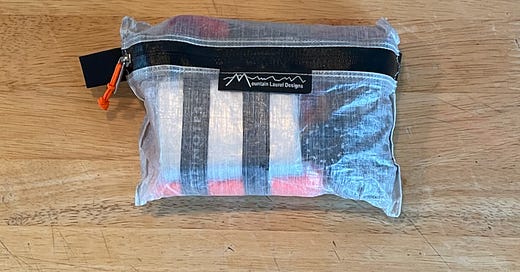Chris P. (CP) and Brady M. (BJM) are WITI contributors and former Special Forces soldiers: Brady was an Officer (18A MOS) and Chris was a Weapons Sergeant (18B MOS). Their real-life deployments put them in some unfriendly places, and in 2020 we asked them to write about what average people should be thinking about when it comes to disaster preparation. This week, we asked them if anything has changed.
Brady here. Four years ago, Chris P. and I talked about the Go Bag—why it’s valuable, and what we recommend you put in one.
Why is this interesting?
We didn’t know there was a global pandemic just around the corner, that was just good timing, I guess. But that pandemic and its aftershocks have affected the way we all work and live, and also modified how I approach preparedness.
To quickly remind everyone: The purpose of a Go Bag is to keep you alive long enough to where you can get to relative safety. I travel for work, and having one ready at a static location is only useful when I’m near it. So, what I’ve done to mitigate risk is to have a mini Go Bag on me at all times. A go-pouch, if you will.
Principles for the go-pouch are:
Keep it small: my pouch is 5x7x2 inches
Keep it light: my pouch weighs 13oz
Keep it useful: Contents should help keep you warm, dry, hydrated, fed, and sheltered for as long as possible
Keep it practical: Nothing that’s unnecessary
Keep it ready: Make sure everything that needs a charge or maintenance gets it on a regular basis
I use a Medium Dyneema Composite Fabric Zip Pouch, $13.00 from Mountain Laurel Designs.
Inside the pouch, major items include:
RATS Tourniquet: Made for one-handed application. Works on kids and animals too.
Mini Trauma Shears: You can’t travel on a plane with a knife, but you can bring these.
Suunto clip-on compass: Find and keep your bearings.
Petzl headlamp: Super compact but you need to remember to charge with a micro USB.
Space Blanket: Stay warm
Altoid Tin Survival Kit: Inside it looks a lot like a traditional survival kit.
Mini Bic Lighter
Kindling (couple small fatwood pieces)
Trick birthday candle
Dyneema cord
Pinch light
Another compass
Mini tweezers
P-38 can opener (handy)
Gerber shard tool, which includes a Pry Bar, Flathead Driver, Wire Stripper Puller, Bottle Opener, Cross Driver, and is Airline-safe
Water purification tabs
RE Factor Survival Card, sadly discontinued.
Hand saw
Elastics
Something to write on and something to write with
Stimulants: Zyns (containing motivation and focus) and an ammonium salts tab.
Prayer: If you’re using this kit to survive, you will need spiritual guidance and providence. My favorites for situations like these are Prayer to St. Michael the Archangel and Psalm 91.
Wrapped round the Altoid kit and the space blanket is a neon-orange Aviator’s Survival Panel Marker. I have no idea where I got it so if anyone can help me find where I can buy a back-up online, I’d appreciate it. It’s a silky synthetic material and has multiple purposes, but mostly it’s for signaling to people (including those on rescue teams) who are far away.
Having a go-pouch with me provides some peace of mind that I won’t be a liability in a handful of emergency situations. It’s also handy to have all of these things with me in plenty of less intense situations at times - I just have to remember to put items back after I use them, and keep things like the headlamp charged. (BJM)
—
Thanks for reading,
Noah (NRB) & Colin (CJN) & Brady (BJM)
—
Why is this interesting? is a daily email from Noah Brier & Colin Nagy (and friends!) about interesting things. If you’ve enjoyed this edition, please consider forwarding it to a friend. If you’re reading it for the first time, consider subscribing.





Curious if they also have food in their main go bags? And if so, what?
This puts my go-bag to shame. 🤦♀️ When I lived in rural Colorado, wildfires were a very real danger, so I always had a go-bag ready to escape to my parents place in Texas: extra clothes and toiletries, important documents, passport, and cat food. The essentials.